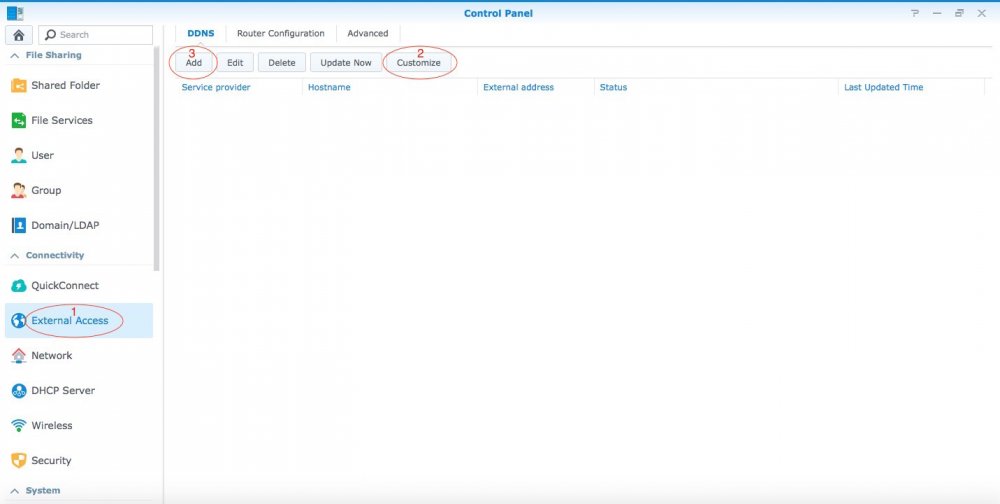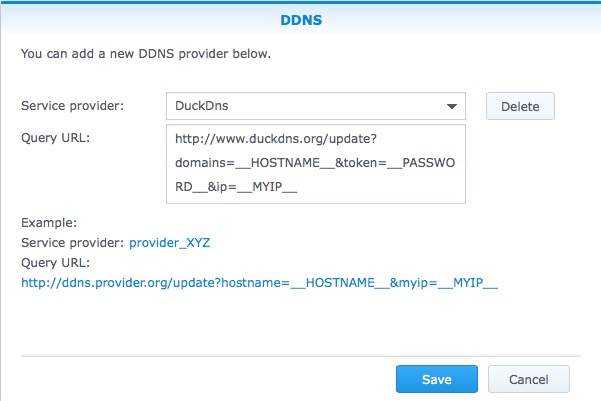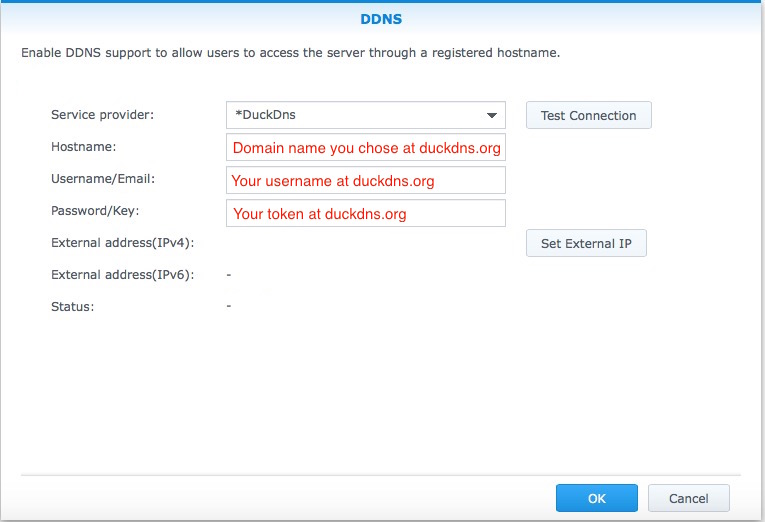Leaderboard
Popular Content
Showing content with the highest reputation on 09/05/2020 in all areas
-
When setting up an XPEnology system, you must first select a DSM platform and version. XPEnology supports a few specific DSM platforms that enable certain hardware and software features. All support a minimum of 4 CPU cores, 64GB of RAM, 10Gbe network cards and 12-disk arrays. When you choose a platform and the desired DSM software version, you must download the correct corresponding loader. That may not be the "newest" loader available. The last 6.x version (6.2.4-25556) is functional only with the TCRP loader. TCRP is very different than the Jun loader. If you want to learn more, or if you are interested in deploying the latest 7.x versions, see the 7.x Loaders and Platforms thread. Be advised that installing 6.2.4 with TCRP is basically the same procedure as installing 7.x. Each of these combinations can be run "baremetal" as a stand-alone operating system OR as a virtual machine within a hypervisor (VMWare ESXi is most popular and best documented, but other hypervisors can be used if desired). Review the table and decision tree below to help you navigate the options. 6.x Loaders and Platforms as of 16-May-2022 Options Ranked DSM Platform DSM Version Loader Boot Methods*** Hardware Transcode Support NVMe Cache Support RAIDF1 Support Oldest CPU Supported Max CPU Threads Notes 1,3a DS918+ 6.2.0 to 6.2.3-25426 Jun 1.04b UEFI, BIOS/CSM Yes Yes No Haswell ** 8 6.2.0, 6.2.3 ok, 6.2.1/6.2.2 not recommended for new installs* 2,3b DS3617xs 6.2.0 to 6.2.3-25426 Jun 1.03b BIOS/CSM only No No Yes any x86-64 16 6.2.0, 6.2.3 ok, 6.2.1/6.2.2 not recommended for new installs* DS3615xs 6.2.0 to 6.2.3-25426 Jun 1.03b BIOS/CSM only No No Yes any x86-64 8 6.2.0, 6.2.3 ok, 6.2.1/6.2.2 not recommended for new installs* DS918+ 6.2.4-25556 TCRP 0.4.6 UEFI, BIOS/CSM Yes Yes No Haswell ** 8 recommend 7.x instead DS3615xs 6.2.4-25556 TCRP 0.4.6 UEFI, BIOS/CSM No No Yes any x86-64 8 recommend 7.x instead DS916+ 6.0.3 to 6.1.7 Jun 1.02b UEFI, BIOS/CSM Yes No No Haswell ** 8 obsolete, use DS918+ instead DS3617xs 6.0.3 to 6.1.6 Jun 1.02b UEFI, BIOS/CSM No No Yes any x86-64 16 6.1.7 may kernel panic on ESXi 4 DS3615xs 6.0.3 to 6.1.7 Jun 1.02b UEFI, BIOS/CSM No No Yes any x86-64 8 best compatibility on 6.1.x * 6.2.1 and 6.2.2 have a unique kernel signature causing issues with most kernel driver modules, including those included in the loader. Hardware compatibility is limited. ** FMA3 instruction support required. All Haswell Core processors or later support it. Only a select few Pentium, and no Celeron CPUs do. ** Piledriver is believed to be the minimum AMD CPU architecture to support the DS916+ and DS918+ DSM platforms. *** If you need an MBR version of the boot loader because your system does not support a modern boot methodology, follow this procedure. CURRENT LOADER/PLATFORM RECOMMENDATIONS/SAMPLE DECISION POINTS: 1. DEFAULT install DS918+ 6.2.3 - also if hardware transcoding or NVMe cache support is desired, or if your system only support UEFI boot Prerequisite: Intel Haswell (aka 4th generation) or newer CPU architecture (or AMD equivalent) Configuration: baremetal loader 1.04b, DSM platform DS918+ version 6.2.3 Compatibility troubleshooting options: extra.lzma or ESXi 2. ALTERNATE install DS3617xs 6.2.3 - if RAIDF1, 16-thread or best SAS support is desired, or your CPU is too old for DS918+ Prerequisite: USB key boot mode must be set to BIOS/CSM/Legacy Boot Configuration: baremetal loader 1.03b, DSM platform DS3617xs version 6.2.3 Compatibility troubleshooting options: extra.lzma, DS3615xs platform, or ESXi 3. ESXi (or other hypervisor) virtual machine install - generally, if hardware is unsupported by DSM but works with a hypervisor Prerequisites: ESXi hardware compatibility, free or full ESXi 6.x or 7.x license Use case examples: virtualize unsupported NIC, virtualize SAS/NVMe disks and present as SATA, run other ESXi VM's instead of Synology VMM Option 3a: 1.04b loader, DSM platform DS918+ version 6.2.3 Option 3b: 1.03b loader, DSM platform DS3617xs version 6.2.3 (VM must be set to BIOS Firmware) Preferred configurations: passthrough SATA controller and disks, and/or configure RDM/RAW disks 4. FALLBACK install DS3615xs 6.1.7 - if you can't get anything else to work Prerequisite: none Configuration: baremetal loader 1.02b, DSM platform DS3615xs version 6.1.7 SPECIAL NOTE for Intel 8th generation+ (Coffee Lake, Comet Lake, Ice Lake, etc.) motherboards with embedded Intel network controllers: Each time Intel releases a new chipset, it updates the PCI id for the embedded NIC. This means there is a driver update required to support it, which may or may not be available with an extra.lzma update. Alternatively, disable the onboard NIC and install a compatible PCIe NIC such as the Intel CT gigabit card.1 point
-
If you have a dynamic IP, you will need to setup a DDNS to access your NAS from outside your local network. So to start thing off you will need to open an account with a DDNS service provider. There are plenty out there, some paid, some free. The two below are the ones that I use personally. They are free. If you find others then you should also be able to use those. Some of these providers might already be part of the list included by Synology in which case you can skip the 'Customize' button and simply use the 'Add' button and select your service provider from there. The configuration example I am giving below will be based on duckdns.org because it's the easiest I have seen out there but unfortunately it is not included in the DDNS service providers list included by Synology so you will need to use the 'Customize' button first. - http://www.duckdns.org - http://www.nsupdate.info Once you have chosen your domain with duckdns.org you will need to configure DSM accordingly. So here is how to: In Control Panel go to External Access (1), then click on Customize (2). A new window should open. You need to fill in as per the image. To save you some time you can copy paste from the code tag provided below the image: http://www.duckdns.org/update?domains=__HOSTNAME__&token=__PASSWORD__&ip=__MYIP__ When you are done click Save. The window should close. Now click on Add (3), see first image. A new window should open. Select *DuckDns from the service provider list and fill in your duckdns domain, username and token: Click on Test Connection to verify that it's working. If it is working you should see the word Normal in green next to Status. You can then click Ok. If it is not working then it means you screwed up somewhere. Recheck query URL, domain, username and token. All that is left to do is to configure port forwarding on your router. This is called at times "port forwarding" or "port mapping". You need to check with your router's user guide as sometimes the wording differs from one brand to the other. The port(s) you will be forwarding to your box also need to be opened on DSM's firewall else DSM will refuse access to the port/service requested. If your ISP implements double NAT you might have to do some additional configuration to your router to allow the ports to be forwarded correctly. Check with your ISP first and also check this site or this site on how to overcome double NAT. Google is your friend. Note of caution here: If you want to make things very safe you would only port forward VPN ports. This means that you can only access your box via VPN which in turn then gives you full access to the box (and to your local network if configured accordingly) once a VPN connection is established. You could also port forward the GUI ports (usually 5000/5001 or the ones you would have customised). This would give you full GUI access to DSM from outside of your network but this can be unsafe specially if you don't have a strong password and proper firewall and safety mechanisms configured in DSM. You could also just forward the port(s)/service(s) that you need. It really all depends what you are using your box for but in most cases the VPN solution is the safest although not the most convenient. NEVER EVER port forward port 22 unless you know exactly what you are doing. To test that your box is accessible from the outside world while being at home you could use your smart phone in data mode (not in wifi) at the following address: http://[yourdomain].duckdns.org:[port number] or https://[yourdomain].duckdns.org:[port number] - Do no put www1 point
-
1 point
-
Yes, and like I said I used to own the ASRock H370 which has those 2 chips and one does not work. Please try on the other port and report back. The I211AT should work fine if it does not work then maybe your issue is something else. My personal opinion is that it should work.1 point
-
OP, you may not fully understand the advice you were given. Yes, your PID/VID needs to be correct, period. You have two ethernet ports, one of them is not supported by the driverset unless you use IG-88's extra.lzma The advice was to try the "other" ethernet port. VID/PID won't change if you do that. You don't technically have to edit the MAC either1 point
-
Yes. It might. Look at this post where you can find a tool to find the VID and PID and other useful software.1 point
-
Then definitely the I211AT should work without any issue. Did you try on both ports?1 point
-
Hi For me only one of the NIC worked. So please try switching the network cable to other network card and start the process again. I just followed the procedure for DS918+ Hope it will help you too.1 point
-
Pues gracias Yonvu, el cráneo de IG-88 me dio consejos, y compre uns Gigabyte b365M H3, 8gb ram, un i3 8100, viene con 6 puertos satas, y así hice mi primer NAS, estoy muy contenta, ya está funcionando con 5 HDD mecánicos y un .M2 donde tengo las VMMs. Ciertamente, gasto demasiada electricidad para este equipo con fuente de 550w, 24hs x 7 días, con el tiempo puede ser un problema. Estoy pensando en alternativas, poner un panel solar solo para el NAS, por el momento he programado el encendido y apagado y de noche lo tengo 8hs. apagado, y a la mañana se enciende solo, es decir , por ahora está el DSM6.2 encendido 16hs diarias, y veremos PODO como se comporta.1 point
-
https://www.synology-forum.ru/index.php?showtopic=10138 Тоже столкнулся с этой проблемой, нормального решения тогда так и не нашел. Сделал костыль - в виртуалке на синолоджи крутиться винда, в винде стоит клиент яндекс.диска, в таком случае со скоростью все ОК. А вообще как-то давно читал, что яндекс обрезал скорость аплоада для сторонних клиентов своего диска, поэтому CloudSync в пролете... ЗЫ. Аналогичный сервис от mail.ru вообще не дает работать по webdav без активной подписки ))1 point
-
Yo llevo ya unos años en este mundo, si quieres algo de bajo coste y no estas pensando en meter muchos discos duros te recomiendo esta placa base.. https://es.aliexpress.com/item/33003462794.html?spm=a2g0o.productlist.0.0.2a695744UkL9HR&algo_pvid=a9416cdb-8f15-40e7-9178-0dec6c57311a&algo_expid=a9416cdb-8f15-40e7-9178-0dec6c57311a-0&btsid=0b0a0ad815976092205672069ee4ab&ws_ab_test=searchweb0_0,searchweb201602_,searchweb201603_ Sino te funciona el link busca en aliexpress asus j1800 Hay una placa que venden con gastos incluidos por menos de 30 euros lleva un j1800, a parte le tienes que pillar memoria, fijate que esta del anuncio usa memoria de portatil, por poco mas de 10 euros me he pillado dos modulos de 2Gb, SO DIMM DDR3L (bajo consumo son las que van a 1.35V). La placa es totalmente silenciosa y muy fresquita, solo tiene dos cores pero va muy bien, uso plex y tengo todo ya para que no tenga que transcodificar pero he hecho pruebas y va mucho mejor que la anterior que tenia antes, una atom d525 y ademas soporta la ultima versión de DSM, incluso he podido cambiarle la MAC para poder hacer wakeonlan. 40 pavos placa base y memoria.. mas barato imposible.1 point
-
Synology DSM 6.1 (xpenology) Lets Encrypt ACMEv1 to ACMEv2 If you get messages like: synoscgi_SYNO.Core.Certificate.LetsEncrypt_1_create[5038]: certificate.cpp:957 syno-letsencrypt failed. 200 [new-req, unexpect httpcode] synoscgi_SYNO.Core.Certificate.LetsEncrypt_1_create[5038]: certificate.cpp:1359 Failed to create Let'sEncrypt certificate. [200][new-req, unexpect httpcode] Then you need to upgrade your DSM up to version 6.2 or replace execution (syno-letsencrypt) file and some changes in configuarion file: 1. Download file syno-letsencrypt (this file from DSM v6.2) link https://drive.google.com/drive/folders/1-LgjOAU3dBtNk2WKZ1KJY88Lklf12RPp?usp=sharing 2. If not enabled SSH, please enable in settings 3. Copy downloaded file syno-letsencrypt in any folder on you NAS 4. Connect to NAS with SSH (Putty) using admin account 5. Make backup of original syno-letsencrypt (sudo cp /usr/syno/sbin/syno-letsencrypt usr/syno/sbin/syno-letsencrypt.bck) 6. Copy downloaded syno-letsencrypt file to directory /usr/syno/sbin/ (ex.: sudo cp /volume1/sharedFolder/syno-letsencrypt /usr/syno/sbin/) 7. Change attributes (sudo chmod 755 /usr/syno/sbin/syno-letsencrypt) to execute new file 8. Now change default address for syno-letsencrypt, using ssh (sudo vi /usr/syno/etc.defaults/letsencrypt/letsencrypt.default) 9. Fine string "server": "https://acme-v01.api.letsencrypt.org/directory", press i and change 01 to 02 10. Press escape, enter :wq and reboot your NAS.1 point



